Forcing or Competing Style Those who use the forcing style of conflict management are preoccupied with achieving their own goals and have no concern for the goals of others. Conflict Resolution on the Jobsite.
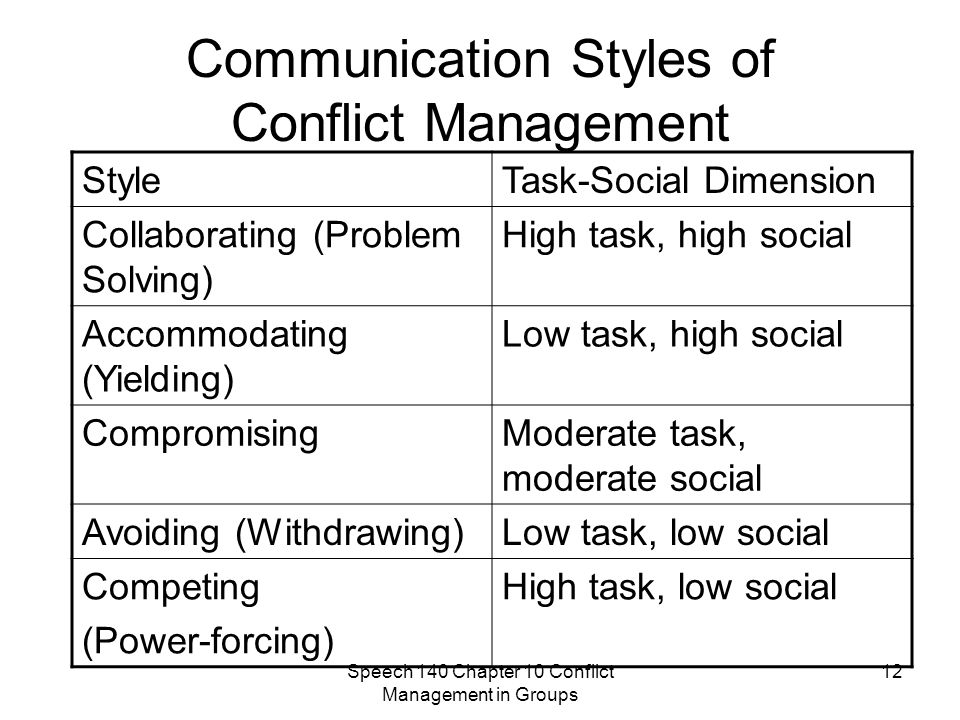
In Mixed Company Chapter Ten Ppt Download
4 Types of Conflict and Tips for Managing Them.
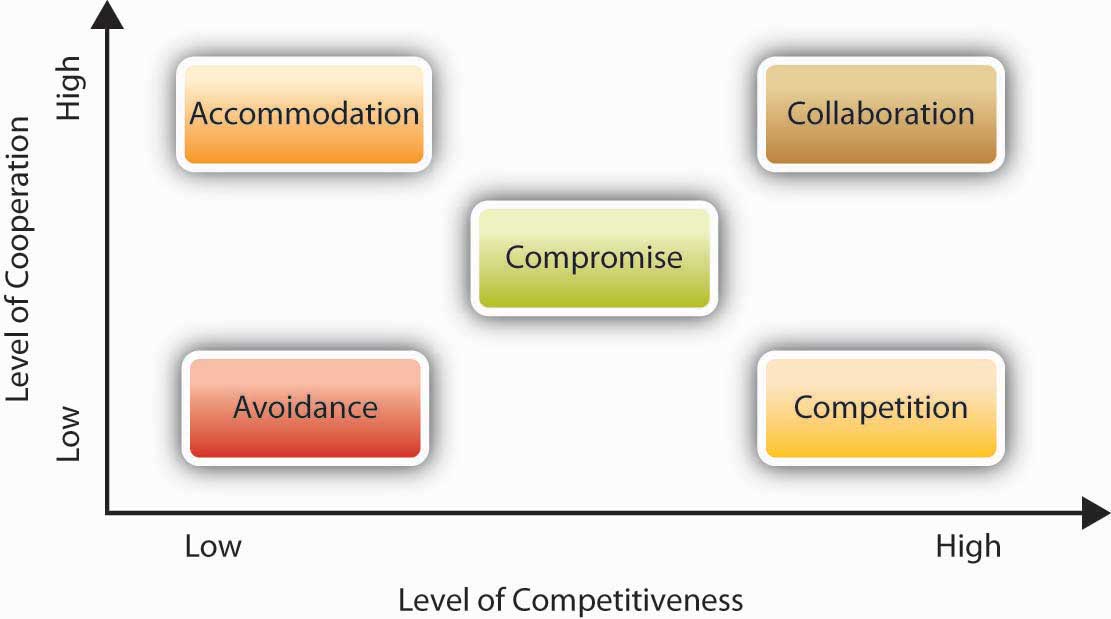
. Conflict management styles such as passive aggressive style forcing style avoiding style accommodating style compromising style and collaborating style. Avoiding is always an ineffective conflict management style because it ignores the conflict instead of confronting it directly. It is found in virtually all businesses and is the power associated with CEOs managers and other authority figures.
Sharks do not hesitate to use aggressive behavior to resolve conflicts. Ø Unpopular action must be taken on important issues Ø Commitment by others is not critical Ø Maintaining. Relationships take on a lower priority.
Some caveats of forcing. May provide a quick resolution to a conflict. This would be a closed communication style.
Conflict Management Styles The Competing Shark Sharks use a forcing or competing conflict management style. Accommodating is often the conflict management style of the less powerful. It puts parties in a winlose relationship where one attempts to achieve hisher goals at.
Avoiding - not paying attention to the conflict and not taking any action to resolve it. You should recognize in this particular style the connections to communication and to power and influence. It can also arise from a code or standard which influences behavior and choices.
Accommodating avoiding collaborating competing and compromising. Legitimate power is the power granted by holding a position or role. The competing power-forcing conflict management style should always be avoided.
As we move up the assertiveness scale we come to the forcing style. As a last resort to resolve a long-standing conflict. 1 places primary emphasis on the task dimension and little focus on the social dimension of groups and 2 should be the style of last resort in most situations.
Its not always an effective strategy but in certain situations you may feel you have no choice. The forcing style of conflict management presents the highest risk of relationship conflict and it should never be used to manage conflicts in organizations. Relationships are maintained and.
Legitimate power isnt always associated with a specific role. Increases self-esteem and draws respect when firm resistance or actions were the response to aggression or hostility. Power and its dynamics in international politics determine how states interact and even the outcome of their interaction.
Kilmann portray competing as a power driven mode being high in assertiveness and low in cooperativeness. There are two different types of conflict. Forcing Conflict Style contd Advantages Ø Decisions may be better if the forcer is right Disadvantages Ø Overuse leads to hostility and resentment toward its user Ø Forcers tend to have poor human relations Appropriately used when.
One of it is task conflict and focuses on the ways to resolve problems. When this style of conflict management is used everyone loses. Possible advantages of forcing.
Five major conflict management styles. May negatively affect your relationship with the opponent in the long run. Places primary emphasis on the task dimension and little focus on the social dimension of groups c.
The conflict style profiles developed by Kenneth W. According to the Thomas-Kilmann Conflict Mode Instrument TKI there are five conflict management styles. The power-forcingstyle of conflict management.
Should be the style of first choice in most situations. Sharks are highly goal-oriented. True False Incorrect Question 69 0 1 pts Avoiding is always an ineffective conflict management style because it ignores the conflict instead of confronting it directly.
The power-forcing style of conflict management places primary emphasis on the task dimension and little focus on the social dimension of groups Constructive conflict differs from destructive conflict because constructive conflict is characterized by supportive communication pattern and seeking a solution to a disagreement that benefits all parties. Understanding your natural conflict management style and how you can adapt it to fit your workplace can have an important impact on your workplace interactions and the productivity of your team. The forcing person believes that one side must win and one side must lose.
Incorrect Question 68 0 1 pts The collaborating style of conflict management tends to provoke relationship conflict in groups while the power-forcing style does not. The paper argues that states that. Accommodating - allowing the other party to satisfy their concerns while neglecting your own.
What Is Your Conflict Management Style The Compromising Fox Foxes use a compromising conflict management style. The avoiding conflict style is one of five styles of conflict management. Is an assertive style d.
The power-forcing style of conflict management a. Concern is for goals and relationships Foxes are willing to sacrifice some of their goals while persuading others to give up part of theirs Compromise is assertive and cooperative-result is either win-lose or lose-lose Advantage. The other type of conflict is called relationship.
Should never be used to resolve conflicts b. Thomas and Ralph H. According to communication experts there are five.
Forcing - using formal authority or other power that you possess to satisfy your concerns without regard to the concerns of the party that you are in conflict with. Here the person with the greater power will enforce a decision on others around him to resolve the conflict.
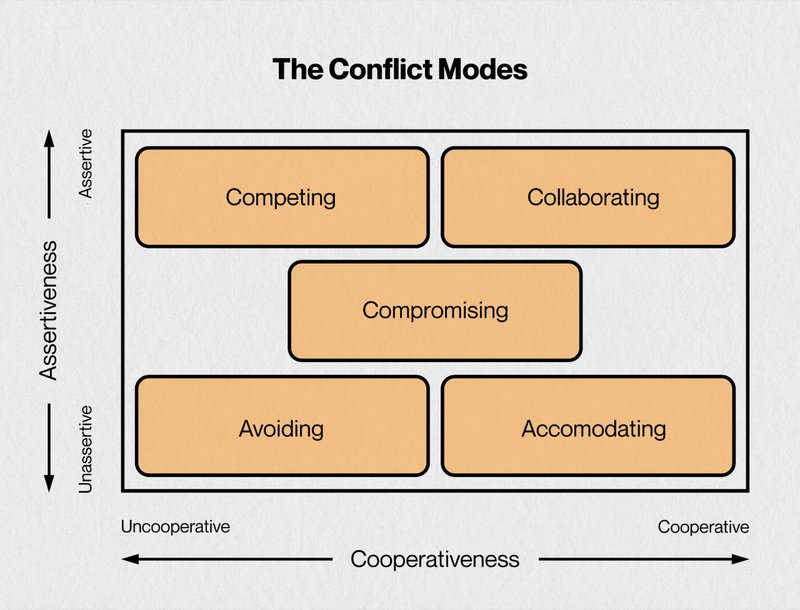
5 Effective Conflict Management Strategies In 2022 The Blueprint

5 Conflict Management Styles For Every Personality Type
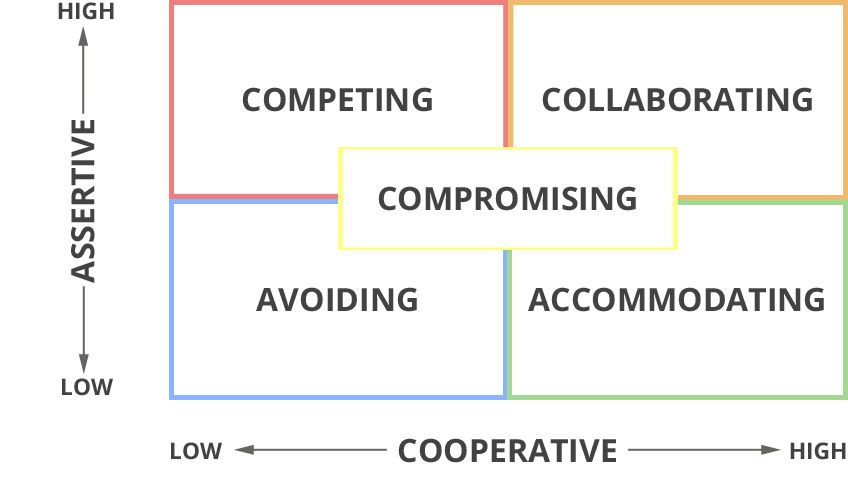
Conflict Resolution Techniques In Project Management
Conflict Resolution Styles Which One Is Best For Managers
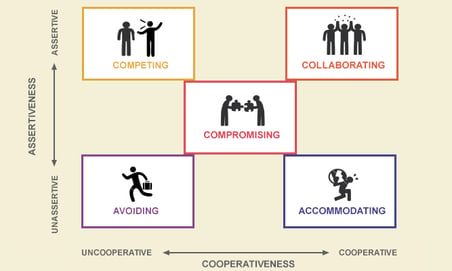
5 Most Effective Conflict Management Styles When To Use Each One
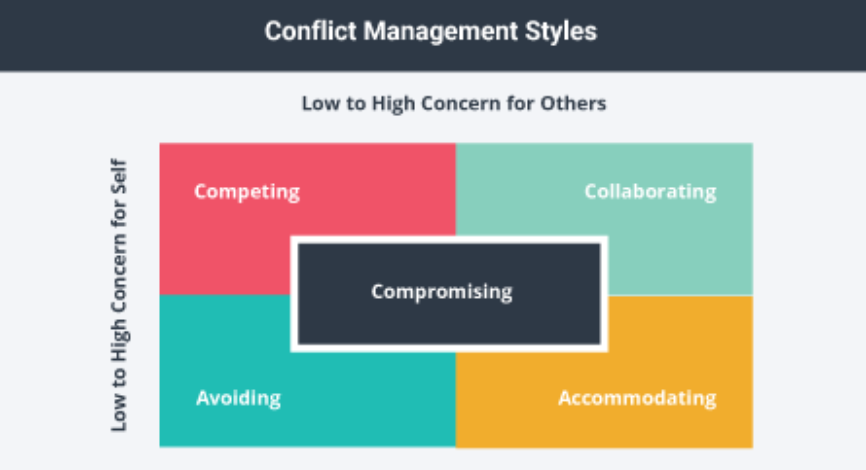
Conflict Resolution Professional Communications
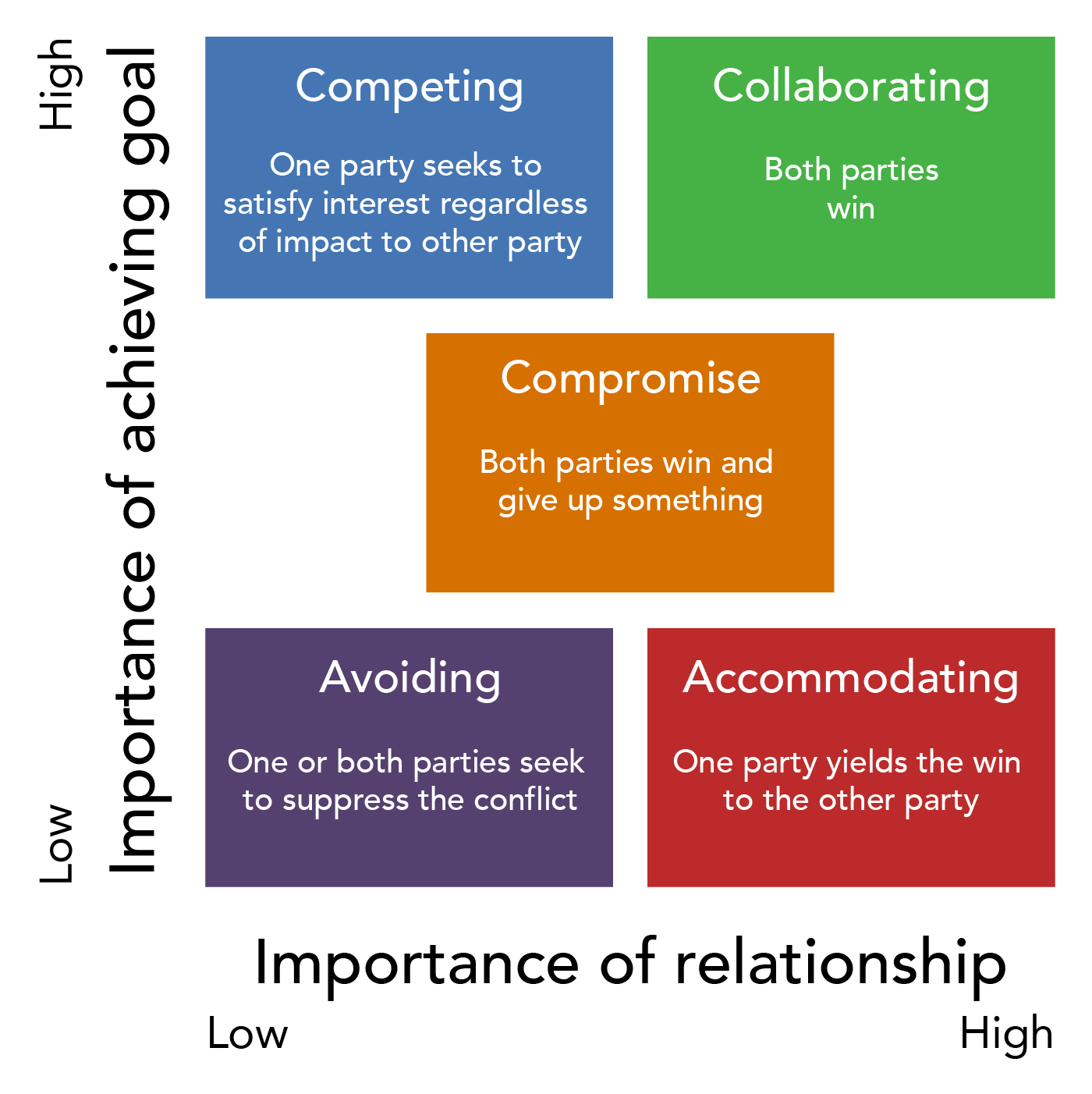
Conflict Management Styles Organizational Behavior And Human Relations
0 comments
Post a Comment